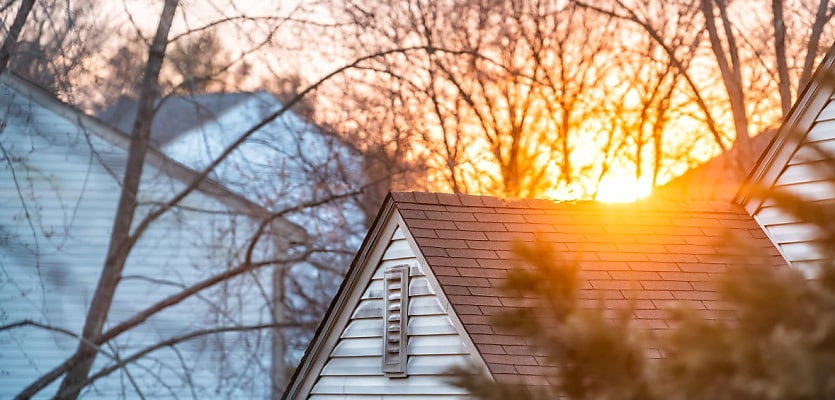The chill winter months have exposed another rental crisis facing Australian households.
No, not the rental crisis that has seen vacancy rates plummet, resulting in some properties receiving up to 60 applications.
The latest rental crisis to grip the nation is the problem of cooling households and the subsequent financial, mental and physical health impacts the cold can have on our nation’s tenants.
Better Renting’s Cold and Costly report surveyed 70 renters across the country between 13 July and 31 July, revealing that during the winter months, Australian renters are subjected to average home temperatures far below the recommended level outlined by the World Health Organisation (WHO).
The WHO dictates that the minimum healthy indoor temperature is 18 degrees Celsius. Among the surveyed, temperatures remained below this guideline 74 per cent of the time or 17 hours per day on average.
Additionally, 39 per cent of the time, the homes of the respondents never clocked a temperature above 18 degrees.
Typically, colder Australian climates, such as Tasmania and the ACT, rarely saw the average house temperature rise above the WHO’s recommendation. In Tasmania, the average temperature was 13.9 degrees, while in the nation’s capital, it was a slightly higher 14.2 degrees.
Darwin was the only Australian location to never register a temperature reading below 18 degrees during the surveyed period, while Queensland is the only state where less than 50 per cent of homes recorded a temperature below this threshold (26 per cent).
The report also analysed the difference between renters and owner-occupiers. On average, renters are consistently colder by about 4 degrees, while their temperatures tend to fall quicker overnight and rise slower during the day.
Moreover, renters fall victim to the cold more than owner-occupiers due to the fact that both their income tends to be lower than that of an owner-occupier — meaning they cannot afford to keep the heat running for extended periods of time — and the fact that they do not own their residence creates a barrier to introducing better heating options, such as updated heating systems, insulation and other heat building amendments.
“Indoor temperatures in winter are often lower than in much colder countries that are better at weatherproofing, insulating, and heating their homes,” the report read.
The impacts of a colder household environment are not just limited to comfort. There are wide-ranging health impacts linked to cold homes during winter, related to both the physical and mental wellbeing of tenants.
A European study found that decreasing temperatures increased mortality more dramatically in regions with milder winters, while it is also found that colder climates can cause blood vessels to constrict and retreat from the skin surface, meaning the heart needs to do more work to get blood through these vessels, consequently increasing blood pressure.
Additionally, a Scottish study indicated that the risk of high blood pressure was twice as prevalent below 18 degrees Celsius and four times more likely when that figure drops to 16 degrees Celsius. Furthermore, an Australian study also found that eliminating cold in Australian homes could lower rates of heart diseases — potentially leading to an extra 1.6 health-adjusted life years per 1,000 persons.
Further health risks of the winter cold include worsening respiratory diseases — such as asthma, which is heavily impacted by a reduction in temperature, while one in 15 deaths in Australia is attributable to winter cold — a rate worse than Sweden, with research suggesting that 30 to 50 per cent of excess winter mortality is linked to the standard of housing.
The negative health implications of colder housing climates are not just limited to an individual’s physical health, with mental health taking a severe toll due to this issue.
The report found that there is a clear linkage between psychological health and room temperatures, with a clear link established between higher room temperatures and lower rates of depression and anxiety.
The Cold and Costly report outlined that individuals living in chronic cold can feel alienated, both from their own home and their social groups, with the debilitating chill of their homes making basic household tasks — like chores — unbearable. This issue is exacerbated by mould, which becomes highly prevalent in these environments, and the constant strain of having to deal with growing mould — that can threaten a building’s structure.
The other mental health issue that arises in colder household environments is what the report described as “anxiety around energy consumption”.
The report concluded with a raft of recommendations that can be implemented to Australia’s rental market by all invested stakeholders to improve the issues that boil over due to dropping temperatures.
Implementations that can overcome the aforementioned impacts of colder households include:
- Minimum energy efficiency standards for rentals enforced by governments — similar to what Queensland and the ACT have introduced.
- Increase household incomes for low-income households — this would create an easier pathway for people to not have to choose between basic services, like food or heating, allowing them to accommodate for both at healthy levels.
- Strengthen tenant protections, which would ensure renters would be able to fight against the sub-par standards.







You are not authorised to post comments.
Comments will undergo moderation before they get published.